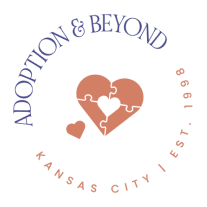Imagine crafting an adoption communication agreement is like building a sturdy bridge. You want it to be strong, reliable, and able to withstand the test of time. But how do you ensure that the lines of communication remain open and effective between birth parents, adoptive parents, and the child?
In this discussion, we will explore four key tips that will help you construct a solid foundation for your adoption communication agreement. These tips will not only guide you in establishing clear expectations and boundaries, but also in including the child’s voice and needs, as well as regularly reviewing and updating the agreement.
So, grab a cup of coffee and get ready to discover how to build a bridge that fosters healthy communication in the world of adoption.
Establishing Open Lines of Communication
To establish open lines of communication in adoption, it’s crucial for both adoptive parents and birth parents to actively engage in honest and ongoing dialogue. Building trust is the foundation for any successful relationship, and in the context of adoption, it becomes even more important. Trust allows for vulnerability, understanding, and ultimately, a safe space for open communication. Both adoptive parents and birth parents must work together to create an environment where trust can flourish.
Active listening is a key component of establishing open lines of communication. It involves giving your full attention to the speaker, without interrupting or judging. Adoptive parents should actively listen to birth parents’ concerns, fears, and desires, while birth parents should actively listen to adoptive parents’ intentions and parenting plans. By actively listening, both parties can gain a deeper understanding of each other’s perspectives, which is essential for building trust and maintaining healthy communication.
Beyond trust and active listening, it’s important for adoptive parents and birth parents to be open and honest with each other. This means sharing thoughts, feelings, and concerns openly, even when it may be difficult or uncomfortable. Honest communication allows for a deeper connection and ensures that everyone’s needs and expectations are being heard and addressed.
Setting Clear Expectations and Boundaries
Establishing clear expectations and boundaries is essential for maintaining a healthy and balanced adoption communication agreement. When it comes to setting these expectations and boundaries, there are a few key tips to keep in mind. By following these guidelines, you can establish trust and maintain consistency in your adoption communication journey:
- Be clear and specific: Communicate your expectations and boundaries from the start. This will help everyone involved understand their roles and responsibilities, creating a foundation of trust. For example, you may want to establish how often you’ll communicate, what topics are off-limits, and what level of involvement you expect from each party.
- Listen actively: Communication is a two-way street, and it’s important to actively listen to each other’s needs and concerns. You can foster trust and understanding by creating an open and safe communication environment. Allow each party to express their thoughts and feelings without judgment.
- Maintain consistency: Consistency is key in adoption communication agreements. Make sure to follow through on your commitments and expectations. This will help build trust and reliability, creating a stable environment for everyone involved. Consistency also involves setting realistic expectations and being transparent about any changes that may arise.
- Revisit and revise: It’s important to revisit and revise your communication agreement regularly. As time goes on, needs and circumstances may change. By revisiting your agreement, you can ensure that it continues to meet the needs of all parties involved. This will help maintain a healthy and balanced adoption communication journey.
Including the Child’s Voice and Needs
Now that you have established clear expectations and boundaries, it’s time to shift the focus towards including the child’s voice and addressing their unique needs within the adoption communication agreement. Considering the child’s perspective is crucial and ensuring they feel heard and valued throughout the process.
When crafting the adoption communication agreement, it’s important to create a space where the child’s voice can be heard. Encourage open and honest communication, allowing them to express their thoughts, feelings, and concerns. By actively listening to the child, you can gain valuable insights into their needs and desires, helping to shape the agreement in a way that meets their best interests.
Emotional support is another key aspect to consider. Adoption can be a complex and emotional journey for a child, and providing them with the necessary support is paramount. Recognize that they may experience various emotions, such as confusion, grief, or even excitement. Ensure that the agreement includes provisions for ongoing emotional support through therapy, counseling, or other means of professional help.
By addressing the child’s emotional needs, you create a safe and nurturing environment that allows them to navigate the adoption process with confidence and security. Remember that the agreement should be a living document, adaptable to the child’s changing needs over time. Regular check-ins and open lines of communication will help ensure that their voice continues to be heard and their needs are consistently met.
Incorporating the child’s perspective and providing emotional support within the adoption communication agreement lays a strong foundation for a healthy and successful adoption journey. You create an environment that fosters their growth, happiness, and overall well-being by prioritizing their needs.
Regularly Reviewing and Updating the Agreement
Regularly reviewing and updating the adoption communication agreement is essential to ensure that it remains relevant and responsive to all parties’ changing needs. By consistently revisiting the agreement, you can ensure that it continues to serve its purpose of promoting healthy and open communication.
Here are four key reasons why regular reviews and updates are crucial:
- Ensuring accountability: Regularly reviewing the agreement allows you to hold each party accountable for their commitments. By assessing whether the agreed-upon communication practices are followed, you can address any lapses and reinforce the importance of accountability.
- Promoting transparency: Updating the agreement regularly creates opportunities for open and honest discussions about the communication process. It encourages all parties to share their thoughts, concerns, and suggestions, fostering an environment of transparency and trust.
- Addressing changing needs: As time passes, the needs and dynamics of all parties involved may change. Regularly reviewing the agreement allows you to identify and address these changes. By doing so, you can ensure that the agreement continues to meet the evolving needs of everyone involved.
- Maintaining relevance: The adoption journey is a lifelong process; the communication agreement should reflect that. By regularly reviewing and updating the agreement, you can adapt it to the changing circumstances and milestones in the child’s life. This ensures the agreement remains relevant and effective as the child grows and develops.
Summary
Crafting effective adoption communication agreements is crucial for building strong relationships between adoptive parents and their children. By establishing open lines of communication, setting clear expectations and boundaries, including the child’s voice and needs, and regularly reviewing and updating the agreement, families can create a solid foundation for effective communication.
Did you know that according to a study conducted by the Adoption Institute, 86% of adoptive parents reported improved communication with their child after implementing a communication agreement? This statistic highlights these agreements’ positive impact on family dynamics and overall well-being.

